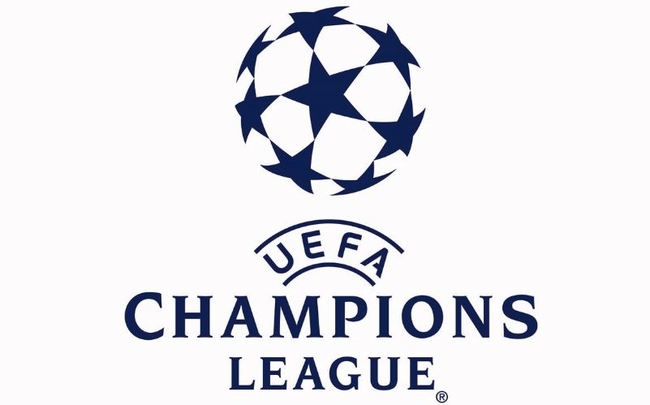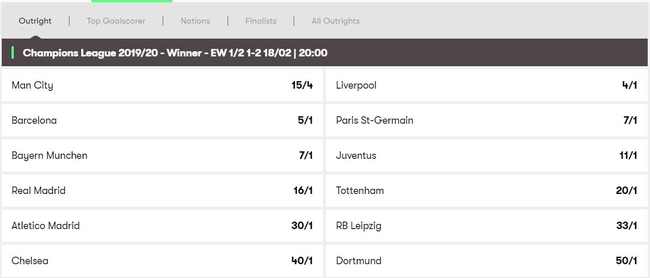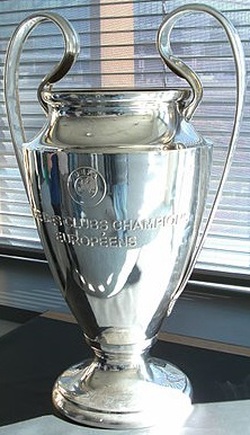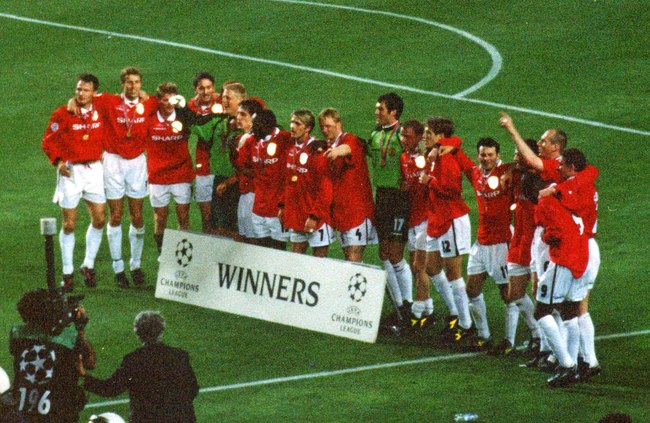The Champions League is a football tournament that oozes money, skill, and the biggest stars in the world. But whether you are rooting for Barcelona or Brondby, there is money to be made by betting on Europe’s premier club competition.
The Uefa Champions League is a 32-team tournament involving sides from all over the continent. Some of the sides automatically qualify for the group stage of the competition via their domestic league (it’s the top 4 in the Premier League) while others have to go through a qualification process if they didn’t do so well.
Winning the tournament is widely considered the greatest achievement in club football, and the knockout stages of the competition, in particular, make for gripping viewing towards the end of the season.
The most successful team in the competition are Real Madrid, who achieved ‘La Decima’, their 10th European Cup title in the 2013/14 season, with the likes of Cristiano Ronaldo and Gareth Bale at the fore. They then added an 11th, 12th, and 13th title in 2016, 2017 and 2018 respectively, becoming the first side to retain the cup in its modern format.
On this page, we will bring you a whole host of stats, facts, and information about the Champions League itself.
Betting on the Champions League
In any given season it is no surprise to see the same teams at the top of the betting to win the Champions League: Bayern Munich, Real Madrid, and Barcelona. Throw in Juventus, PSG and perhaps some of the English sides and you’ve probably got the winner amongst them.
But betting on the outright winner is just one of a plethora of Champions League betting options. With upwards of 100 markets for each of the group games plus other bets based around specific groups, the countries of the teams involved, the top scorer in a given group or in the tournament… well, the list goes on and on.
In short, betting on the Champions League is almost as varied and potentially exciting as betting on the Premier League. With so many top-class games you are generally spoiled for choice, and there is always value to be had if you think before you bet.
For instance, betting on a low-scoring match can pays dividends in a final group game between two sides who’ve already qualified. Back in the day, backing Cristiano Ronaldo to score seemed to pay off rather regularly too. But really, if you study the stats and make informed rather than rash picks for your bets, you have a good chance of making a decent net win when betting on the Champions League.
A Brief History of the Champions League
The Champions League was born in 1992, replacing the European Cup which had been running since 1955. While the European Cup allowed just one side per country to compete, the Champions League allowed multiple entrants from certain countries to enter and introduced a group stage as the first round of the competition.To compete in the Champions League is enormously beneficial for both the pride of a club and more importantly for their finances. The TV money involved is now so much more than it has been previously as the fame of football clubs increases globally, so much so that in a number of domestic leagues around Europe the stakes during ‘race for the Champions League’ are almost on a par with winning the league or the relegation fight.
The final of the competition is played on neutral soil on every single occasion and the furore and attention it gets seems to increase every year. For example the 2009 final between Barcelona and Manchester United attracted a viewership of 109 million people, surpassing the Super Bowl for the first time; and in 2013 when the game was contested between Bayern Munich and Borussia Dortmund at Wembley, it was the most viewed sporting event of the year worldwide. The tournament is televised in over 70 countries and commentated on in over 40 different languages; a feat which in itself would have been technologically impossible when the competition began in 1992.
Champions League Stats & Facts
Here we take a look at some of the Champions League stats and facts, including previous winners, biggest wins, most appearances, and top scorers.
Previous Winners
Spain are by far the most successful nation in terms of producing Champions League winners. Real Madrid have won the title more times than any other club since its renaming from the European Cup in 1992, and Barcelona have won it on four occasions too. AC Milan are the second most successful Champions League club, having won the modern competition three times and boasting seven trophies in total.
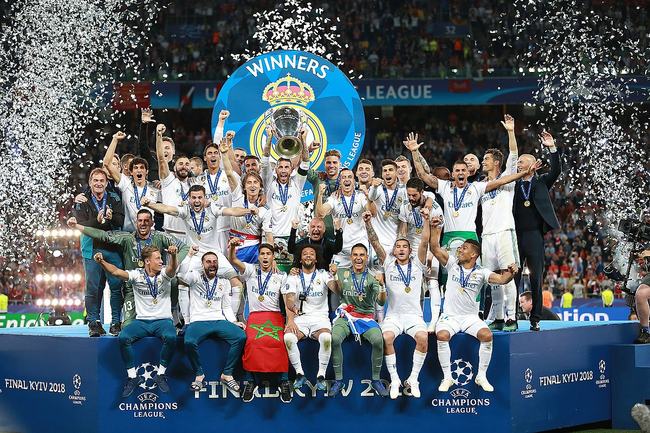
Антон Зайцев [CC BY-SA 3.0 GFDL]
Leeds United and Arsenal have both made the final in the past but are yet to taste success. Leeds lost the 1975 final to Bayern Munich, and the Gunners went down to Barcelona in 2006.
Biggest Wins
| Who | Score | When |
|---|---|---|
| Liverpool v Besiktas | 8-0 | 2007 |
| Real Madrid v Malmo | 8-0 | 2015 |
| Juventus v Olympiacos | 7-0 | 2003 |
| Arsenal v Slavia Praha | 7-0 | 2007 |
| Zilina v Marseille | 0-7 | 2010 |
| Valencia v Genk | 7-0 | 2011 |
| Bayern Munich v Basel | 7-0 | 2012 |
| Bate Borisov v Shakhtar Donetsk | 0-7 | 2014 |
| Bayern Munich v Shakhtar Donetsk | 7-0 | 2015 |
| Barcelona v Celtic | 7-0 | 2016 |
The table above shows results for the final stages, but European minnows HJK Helsinki are responsible for the largest Champions League winning margin ever, beating Bangor City 10-0 in the 2011/12 Second Qualifying Round. Liverpool famously beat Besiktas 8-0 in the 2007/08 Group Stages while Bayern Munich beat Basel 7-0 in the Round of 16 in 2012. Another famous thrashing is Manchester United’s 7-1 demolition of Roma in 2006/07 while the biggest winning margin in a final is AC Milan’s 4-0 defeat of Barcelona in 1993/94.
Most Appearances
| Player | Appearances | Retired? |
|---|---|---|
| Iker Casillas | 181 | 2019 |
| Christiano Ronaldo | 171 | No |
| Xavi Hernandez | 157 | 2019 |
| Ryan Giggs | 151 | 2014 |
| Raul Gonzalez | 144 | 2014 |
| Lionel Messi | 140 | No |
| Paolo Maldini | 139 | 2009 |
| Andres Iniesta | 132 | No |
| Clarence Seedorf | 131 | 2014 |
| Paul Scholes | 130 | 2012 |
Manchester United legend Ryan Giggs had made the most appearances in the history of the Champions League at one point, with an impressive 151 outings in the competition. He has since been overtaken by Iker Casillas, Christiano Ronaldo, and Xavi, but not many of our top 10 are still playing at all let alone for top clubs, so any new contenders to the throne are a long way off.
Top Scorer
| Player | Goals | Retired? |
|---|---|---|
| Christiano Ronaldo | 128 | No |
| Lionel Messi | 114 | No |
| Raul Gonzalez | 71 | 2014 |
| Karim Benzema | 64 | No |
| Robert Lewandowski | 63 | No |
| Ruud van Nistelrooy | 56 | 2012 |
| Thierry Henry | 50 | 2014 |
| Zlatan Ibrahimović | 48 | No |
| Andriy Shevchenko | 48 | 2012 |
| Filippo Inzaghi | 46 | 2012 |
The Portuguese supremo has the scoring record and by some distance too. Ronaldo’s 128 goals in 171 Champions League games puts him just ahead of Messi, although both are well clear of everyone else. They could potentially even net a few more each and even though a lot of people on the list are technically still playing, some of them will be retiring imminently. Robert Lewandowski is the youngest player on the list but he already into his thirites.
Champions League
How Are the Teams Chosen for the Champions League?
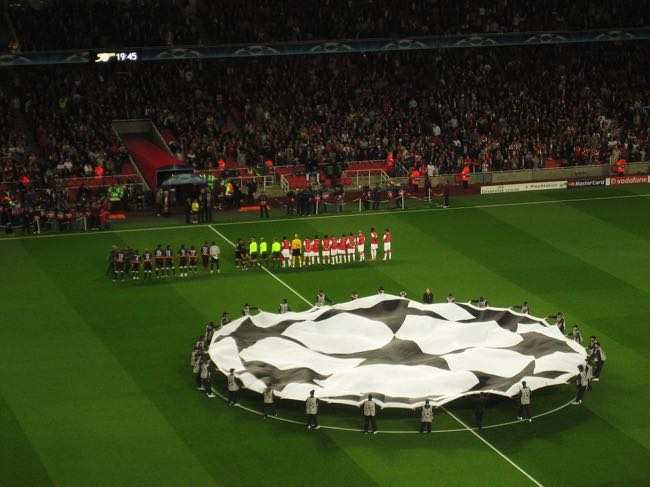
Champions League anthem (Kieran Lynam / Wikipedia.org)
The qualification and structure of the forerunner to the Champions League, the European Cup, was – for the most part – perfectly straightforward. To qualify for the competition, teams had to win their domestic league. Then the tournament was simply a knockout competition featuring (usually) 32 teams. But then everything changed in the 1992/93 season when the European Cup morphed into the Champions League.
As we shall see below, the structure of the tournament as it is today is a little different to a straight knockout on account of the Group Stage and qualifying rounds (although the last European Cup, in 1991/92, also featured a Group Stage). Before we get to the structure of the tournament though, let’s take a closer look at how teams qualify for the Champions League.
How to Qualify for the Champions League
We’d like to explain Champions League qualification in a straightforward, easy-to-understand manner. Alas, UEFA are not particularly good at making things easy to understand. Before we tackle the intricacies of CL qualification, it’s time to get our maths heads on.
UEFA Coefficient
Although you might have expected to have left coefficients back in your last GCSE mathematics exam, if you want to get to grips with Champions League qualification, you have to understand the UEFA Coefficient. Or rather the UEFA Coefficients, because they have several of them!
A coefficient, in very basic terms, is a number (or variable) that is used to measure something and that can change based on specified factors. When it comes to the Champions League, UEFA use two important coefficients:
- Association Coefficient – This is used to assess the collective performance of clubs from the different national football associations. The associations are then ranked, from (at the time of writing) 1 to 55. The association ranking is used to determine what stage clubs from that association should enter the Champions League (and indeed the Europa League and the Europa Conference League).
- Club Coefficient – The coefficient applied to individual clubs will determine each club’s seeding for the Champions League (and other competitions) which affects who they will face/avoid in certain stages (qualifying and group stages) of the tournament.
The Club Coefficients are calculated based on clubs’ individual performances in the Champions League and other UEFA tournaments. The club figures are then fed into the Association Coefficients to give a collective indication of how associations have performed. We won’t go into the minutiae of how each is calculated lest you have painful flashbacks to maths lessons from school.
How Many Teams Can Each Association Enter?
Here we run through the quota for teams entering the Champions League (based on the most recently published 2022/23 Edition of the Regulations of the UEFA Champions League).
Note that there are two ‘paths’ before the Group Stage: the Champions Path and the League Path. We’ll go into more detail about these in the Champions League Format section below.
| Association Ranking | Number of Teams Entered | Notes (CP = Champions Path, LP = League Path) |
|---|---|---|
| 1-4 | 4 | All four teams enter at the Group Stage |
| 5-6 | 3 | Two teams enter at the Group Stage, one at the Third Qualifying Round (LP) |
| 7-11 | 2 | One team enters at the Group Stage, one at the Third Qualifying Round (LP) |
| 12-13 | 2 | One team enters at the Play-off Round (CP), one at the Second Qualifying Round (LP) |
| 14-15 | 2 | One team enters at the Third Qualifying Round (CP), one at the Second Qualifying Round (LP) |
| 16-19 | 1 | Enters at the Second Qualifying Round (CP) |
| 20-51 | 1 | Enters at the First Qualifying Round (CP) |
| 52-55 | 1 | Enters at the Preliminary Round (CP) |
At the time of writing, the four associations that get four teams each straight into the Group Stage of the Champions League are England, Spain, Italy and Germany. France and Portugal are next, with Netherlands, Russia*, Belgium and Austria completing the top 10. Additionally, at the time of writing, Russian clubs are banned from UEFA competitions.
Do You Have to Win Your Domestic League to Enter the Champions League?
In a word, no. Clearly for associations that are permitted to enter more than one side, some of them must have not won their domestic title. So for the leagues permitted to enter four teams, for instance, that would include the champions of the domestic league and the teams that finished second, third and fourth in the table. If an association has been allocated only one place, that goes to the domestic champions.
There are two exceptions to this: the winners of the previous season’s Champions League and the Europa League gain automatic qualification to the Group Stage of the Champions League, irrespective of where they finished in their domestic league.
Note that the maximum number of teams any member association (country) can have in any Champions League tournament is five. So if English teams played an absolute blinder one season and won both the Champions League and the Europa League, it would mean they would go into the Champions League and whichever team finished fourth in the Premier League would miss out (assuming it wasn’t one of the teams that won the CL or EL of course).
Champions League Format
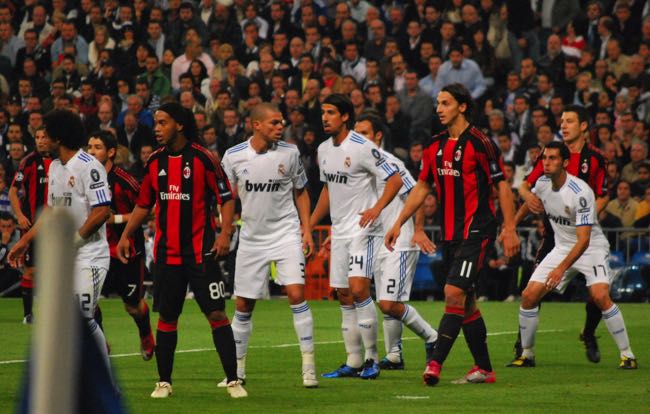
Milan & Real Madrid (Jan S0L0 / Wikipedia.org)
Right, now we’ve got the qualification well and truly sussed, let’s turn our attention to the format of the tournament itself. Although things are relatively easy to explain from the Group Stage onwards (which is the tournament ‘proper’), the Champions League gets underway long before that.
We’ll give details of each stage of the competition along with when it usually takes place. Note, however, that these dates are approximate and this isn’t always set in stone, as seen in 2022 when things were altered to accommodate the Qatar World Cup).
Note that UEFA have announced plans to overhaul the structure of the Champions League from the 2024/25 season. The information here will focus on the structure as planned to continue to the end of the 2023/24 season.
Preliminary Round
- When It’s Played – June
- Number of Teams – 4
The Preliminary Round is a mini four-team tournament between the champions of the domestic leagues of the lowest-ranked associations. For example in the 2023/24 season, this will be the champions of Iceland, Montenegro, Andorra and San Marino.
This takes place towards the end of June, so usually less than a month after the previous season’s Champions League final. There are two single-leg semi-finals and a single-leg final, the winner of which progresses to the First Qualifying Round. The losing finalist and semi-finalists transfer to the Europa League.
First Qualifying Round
- When It’s Played – July
- Number of Teams – 32
Next up we have 16 two-legged ties to determine which side progress to the Second Qualifying Round. The losing sides transfer to the Europa League. The Second Qualifying Round is the stage at which things slip into the Champions Path (for sides that won their domestic title) and the League Path (for those who finished in places below the champions in their domestic league but still qualified for the CL).
As all sides who entered the competition at the Preliminary Round or the First Qualifying Round had won their domestic championship, the winners of the First Qualifying Round ties go into the Second Qualifying Round – Champions Path.
Second Qualifying Round – Champions Path
- When It’s Played – July/August
- Number of Teams – 20
As well as the 16 winners of the First Qualifying Round, the Second Qualifying Round – Champions Path includes four additional teams (the champions of associations ranked 16 to 19). This round sees a total of 10 two-legged ties with the winners progressing to the Third Qualifying Round – Champions Path. Once again, the losers transfer to the Europa League.
Second Qualifying Round – League Path
- When It’s Played – July/August
- Number of Teams – 4
Featuring the four sides that finished as runners-up in associations ranked 12-15, the Second Qualifying Round – League Path features two two-legged ties. The winners progress to the Third Qualifying Round and the losers – you’ve guessed it – transfer to the Europa League.
Third Qualifying Round – Champions Path
- When It’s Played – August
- Number of Teams – 12
This features the 10 winners of the Second Qualifying Round – Champions Path ties along with the champions of associations ranked 12 and 13. You probably get the gist now, but here we have six two-legged ties, the winners progress to the Play-off Round and the losers head off to the Europa League (aka the reject bin).
Third Qualifying Round – League Path
- When It’s Played – August
- Number of Teams – 8
Here we have the winners of the two Second Qualifying Round – League Path ties along with the teams that finished second or third in the leagues from associations ranked five to 11. The winners of the four two-legged ties go through to the Play-off Round, the losers get swept aside to the Europa League.
Play-Offs – Champions Path
- When It’s Played – August
- Number of Teams – 8
The six winners of the Third Qualifying Round – Champions Path are joined by the champions from associations ranked 12 and 13 for four two-legged ties. The winners progress to the Group Stage, the losers head to the Europa League, dreaming of what might have been.
Play-Offs – League Path
- When It’s Played – August
- Number of Teams – 4
The four winners of the Third Qualifying Round – League Path ties get the chance to progress to the Group Stage by winning their two-legged play-off. The losers skulk off to the Europa League.
Group Stage
- When It’s Played – September to December
- Number of Teams – 32
Okay, we have finally made it to the tournament proper and the stage of the UCL with which most fans, certainly from major football nations, are familiar with. The 32 teams include the four that made it through the Champion Path and the two that came through the League Path. They are joined by the 24 teams that qualified for the Group Stage without having to go through the qualifying rounds (based on the ranking of their association) as well as the winners of the previous season’s Champions League and Europa League.
The 32 teams are seeded, with further geographic restrictions in place to keep clubs from the same country apart. They are split into eight groups of four and each team plays the other three in their group twice, once at home, once away. The teams that finish first and second in each group progress to the Knockout Phase. The teams that finish third in each group get another bite of the cherry in the Europa League.
Knockout Phase
- When It’s Played – February to May/June
- Number of Teams – 16
The 16 teams that made it out of the Group Stage are drawn into eight two-legged ties in the Round of 16. Side that topped their quartet will play teams who came second in one of the other seven groups. The winners of these games move on to the Quarter Final, where clashes are also played over two legs.
The winners then go into two-legged Semi-finals, before the winners of those meet in the Final, which is a single match at a pre-selected venue. The venue for the final is usually neutral, but it is possible that it is played at the home ground (or home country) of one of the teams just by luck (such as the 2011-12 final between Chelsea and Bayern Munich that was played at Munich’s home stadium of the Allianz Arena… though Chelsea won on penalties).
How Will the Champions League Change from the 2024/25 Season?
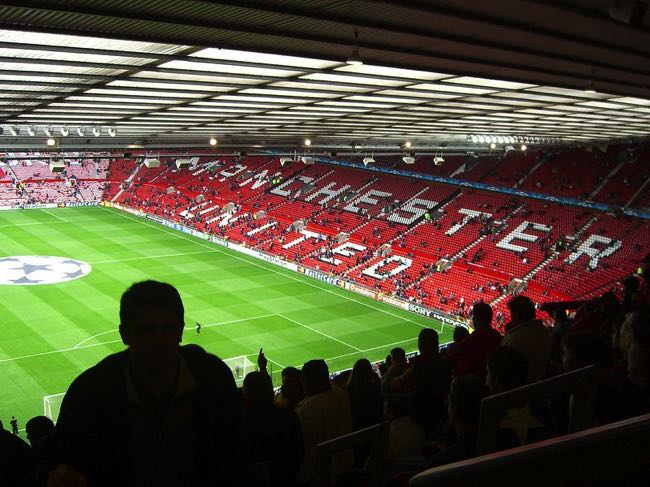
David Poblador i Garcia / Flickr.com
As mentioned above, UEFA have decided to shake things up from the 2024/25 season. When it comes to the Champions League, the biggest change is that they are abandoning the current Group Stage model of eight groups of four teams. They are replacing it with one giant league that employs a so-called Swiss system (which is used in chess tournaments), which is frankly going to confuse the hell out of fans, but then UEFA are seemingly never keen on the simplest option.
Within this 36-team league, each team will have at least eight fixtures (with most playing 10 games) to determine their final position. The kicker is, teams will not know which other teams they will play at the start of the Group (or League) Stage. The next opponents are apparently going to be decided after each set of games based on their results to that point. This is bound to cause all kinds of problems for fans who want to watch their side play away as they will never be able to book their flights and accommodation very far in advance. But hey, more games will mean more revenue for UEFA, so they won’t give a monkey’s about that!
Once the Group Stage is over, the top eight sides will progress to the Round of 16, while the teams that finish in positions nine to 24 will compete in two-legged play-offs (yep, more games to lap up!) with the winners progressing to the Round of 16. Whether UEFA will stick to the new format remains to be seen, and we expect a backlash from fans as it approaches. But for now at least, that is the plan for the future of the Champions League as UEFA officials attempt to create a European Super League without calling it a European Super League.

